WHAT'S WRONG WITH BACKYARD EGGS?
With the growing popularity of urban farming, more and more people are becoming interested in starting their own backyard flocks believing that, by raising their own—or adopting—chickens and ensuring the highest welfare standards, they can eliminate the suffering inherent in egg production. The sad reality is that, no matter how well treated laying hens may be in their foreshortened lives, they remain the product of enormous and intentional cruelty that is inflicted only because people want to consume eggs.
This hidden cruelty involves the misery of the captive parents who are bred raw before being killed as young adults; it involves the mass murder of the hens' "unprofitable" siblings (the male chicks and the "defective" female chicks); it involves the crippling disabilities that are genetically induced in the name of egg overproduction; it involves a short life in a socially and biologically reduced environment; it involves an untimely, and horrifying death. To consume eggs, even from rescued chickens, is to legitimize and perpetuate this suffering.
If you have been led to believe that backyard egg production is a humane alternative, or that consuming eggs from rescued hens can be ethical, please ask yourself:
1. Where do the hens come from?
5. What happens to the hens when they stop laying eggs at a profitable rate?
7. Why do we think of chickens, and other animals, as food or sources of food?
1. WHERE DO THE HENS COME FROM?
Most hobbyists starting a backyard flock mail-order their chicks from the same hatcheries that supply factory farms.
Of the 500 million chicks hatched annually in the US for egg production, 500 million are denied the care, warmth and protection of their mothers. The chicks are incubated in metal drawers where the complex and constant communication that flows between mother hen and her growing embryos is replaced by the cold silence of machines.
After 21 days, the chicks peck their way into a world where their only experience of mother love is one of its bitter absence. Barely hours old, these vulnerable orphans will be jostled around on machines, roughly handled, sorted, sexed, often by means of forcing the newborn's internal sex organs to protrude, separated into males and females, and then tossed back on the conveyor belt to be taken to their next ordeal. The newly hatched females (pullets) are packed and shipped via US postal office to hobby farmers, backyard egg enthusiasts and feed stores all over the country.
Because 10% of these frail infants die in transit from the stress of transport and confinement without food, water, or temperature control for 24-72 hours (sometimes longer), the hatchery always packs more chicks than the order called for. Often, these extra babies, called "packers", are males who either have been incorrectly identified as female, or are simply used as packing material instead of being discarded by other means.

2. WHAT HAPPENS TO THE MALE CHICKS?
The 250 million chicks identified as male (cockerels) are killed the day they hatch because, in their inability to lay eggs, they are useless to the egg producer.
Their short time on earth is filled with fear, bewilderment and pain, as workers push them through the grim stages of their journey from incubator to mass grave: sorting, sexing, separation, slaughter.
As they are tossed about from hatching drawer, to conveyor belt, to sorting tray; as they are rough-handled in the process of having their sex determined; as they are thrown back on a conveyor belt headed for the bone-breaking jaws of a grinder, or the agony of the gas chamber, or the horror of the smothering bag, or the slow death in a dumpster filled with the dead and dying bodies of their brothers, these newborns never stop cheeping for their mothers. They may know nothing of the world in their brand new lives but they do know this: they deserve to live, they deserve to be loved, and they affirm this certainty to their last breath.
The few cockerels who are not killed immediately are used as packing material for the female chicks shipped to hobby farmers. If they make it to their destination alive, they are either butchered at 6-8 weeks of age when their gender becomes apparent, or they are abandoned at shelters to be "euthanized". If the chicks are hatched on the farm, the cockerels in each clutch are "respectfully" killed on the farm, with "a sharp pair of shears, or a knife at the neck, or an axe and a chopping block".
Of the 500 million "layer" chicks hatched annually in the US, 50-60% are brought into existence only to be killed on their first day of life for being male, while another 10%-20% are expected to die from stress or other factors. These are the "waste" infants of the egg industry—the males, the "defective" females, the sick and the injured.
Because mass infanticide is the foundation of egg production, hatcheries hatch three times more eggs than the number of chicks they plan to sell, and the cost of handling and disposing of the "waste" babies is included in the price asked for each female chick.
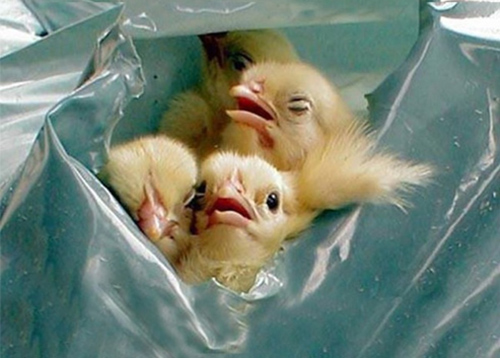
3. WHAT HAPPENS TO THE PARENTS?
The parents of future egg-laying hens are usually debeaked in preparation for a short life of stressful confinement. Debeaking—a partial amputation of the bird's beak, that cuts through bone, cartilage and soft tissue—is so painful that some birds die of shock on the spot, while others, unable to eat or drink, die slowly of starvation or dehydration. The survivors endure chronic, lifelong pain similar to phantom limb pain in their disfigured beaks.
The young parent birds are confined in giant warehouses where they are bred relentlessly for the duration of their short lives. Unable to escape the shed or defend themselves against the roosters, the hens are overmounted, causing crushing injuries, broken bones, severe feather loss, painfully raw vents and distended bellies.
None of these hens will ever get to see any of her babies. Every single one of the 90 billion eggs produced annually in the US originates from a hen who has been denied the freedom to raise her young. Each year, at the end of their first laying cycle, the hens who survive the ordeal of multiple rapes, are discarded and replaced with younger "breeding stock".
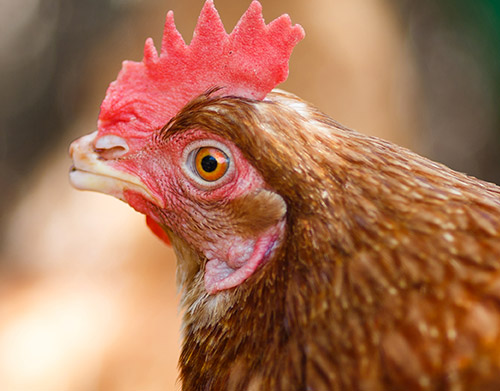
"Spent" breeding hens are mass-killed by the fastest and most economical means possible, but a small number are sold for a discounted price to small farmers who use the eggs of these "late cull parents" for another year or two before slaughtering them.
When urban farmers buy chicks, or fertilized eggs to hatch in homemade incubators, both the chicks and the eggs come from these tormented parent birds.
4. WHAT HAPPENS TO THE HENS' BODIES AS A RESULT OF FORCED OVERPRODUCTION?
Free living chickens, like all birds, lay eggs only once a year (usually in the spring) and only enough to ensure the survival of their species—an average of 10 to 20 eggs. Domesticated hens have been selectively bred to lay between 260 to 300 eggs a year. As a result of being genetically manipulated to produce an unnaturally large number of unnaturally large eggs, laying hens suffer from a host of crippling disorders of the reproductive tract, many of which can be fatal.
These include: Egg binding (eggs that get stuck in the oviduct and are slow and painful to pass, or cannot be passed at all, causing life threatening infections that often result in death), uterine prolapse (as a result of straining daily to expel large eggs, the bird's uterus pushes out through the anal vent area, leading to a painful infection and a slow, agonizing death); tumors of the oviduct; peritonitis, osteoporosis and the accompanying bone fractures.
Even when rescued and allowed to live out their lives, many egg laying hens cannot be saved from the pain and suffering that has been bred into their systems in the name of egg production.
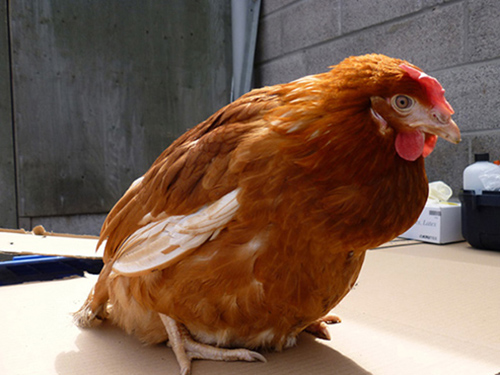
5. WHAT HAPPENS TO THE HENS WHEN THEIR EGG OVERPRODUCTION DECLINES?
At the young age of 1.5 to 3 years—a fraction of a chicken's natural lifespan—when a hen's ability to lay one egg nearly every day decreases, she is considered "spent" and she is discarded by the most inexpensive means possible.
If she is part of an urban farm flock, she will likely be "respectfully" decapitated in her own backyard by one of the people she knew and trusted. If she is part of a "free-range" flock, she may be tossed in a huge metal drum and gassed along with hundreds of her terrified sisters; or she may be locked in a sealed shed and drowned in fire-fighting foam; or she may be sent to "low priority" slaughter (meaning that the agony of transport and "processing" will last that much longer).
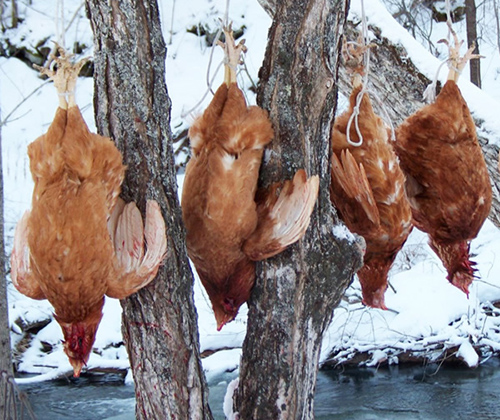
6. WHY ARE THEY HERE IN THE FIRST PLACE?
Like all domesticated animals, chickens are isolated from the natural world in which they have evolved for millennia, and forced to remain forever vulnerable and dependent on the very individuals who profit from their suffering and death. Severed from the intricate social structures that governed their free-living communities, and confined, without the possibility of escape, to a human world where they have no place in the present, no link to the past, and no possibility of a free future, farmed hens have no say in the most important aspects of their lives.
Humans decide:
Where they will live.
If they will ever know their mother.
If, and how long, they will nurture their chicks.
When, and if, they will be permitted to see or be with their families and friends.
When, how, and if, they are going to reproduce.
What, when, and how much they will eat.
How much roosting space they will have, if any.
If, and how far, they will be allowed to roam.
What mutilations and genetic mutations they will be subjected to.
What, if any, veterinary care they will receive.
When, where, and how they are going to die.
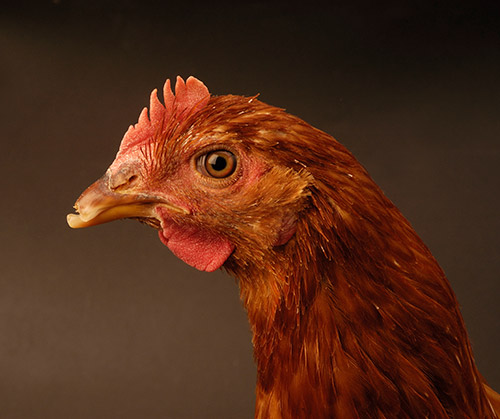
7. WHY DO WE THINK OF CHICKENS AND OTHER ANIMALS AS FOOD?
The body and secretions of a fellow animal are not things for us to eat, any more than a human being's body and its secretions are things for us to eat. Consuming eggs (even from rescued chickens), or giving them away to people who would otherwise buy eggs from battery caged hens, does not "reduce suffering", it legitimizes suffering, it demands suffering, it perpetuates suffering by condoning the very practice of violence we claim to abhor and many of us are struggling to end.
The hen may not know that her suffering body, her unfreedom, her isolation, and every misery in her life, is inflicted intentionally, systematically, and solely for the sensory gratification of humans, but you do.
She may not know that the fertilized egg that brought her into existence was the result of confinement and rape, or that hens like her are the product of mass infanticide, but you do.
She may not know that the cost of killing male infants, "spent" breeding parents and "spent" hens it built into the price of eggs, but you do.
She may not know that, if we became vegan, the horrors that she, and her kind, are forced to endure would end, but you do.
Act on that knowledge. Become vegan and educate others about the violence and injustice inherent in all non-vegan choices. Rescue (don't buy) chickens and other animals, respect their lives, and please remember to always give the eggs back to the birds: They are, after all, the only rightful owners.
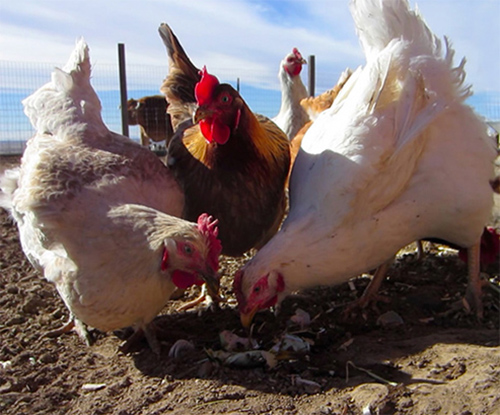
___________________________________
by Joanna Lucas